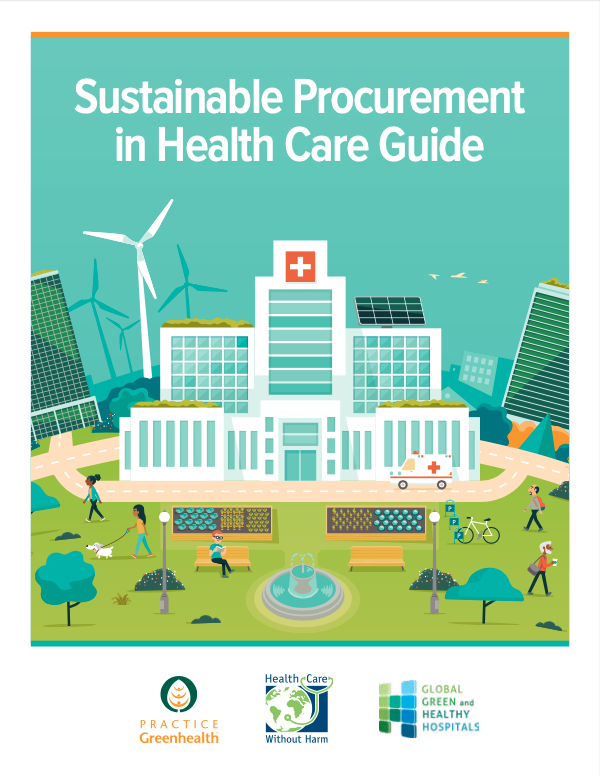Every day, healthcare organisations make choices about the products and services they use, from medications, food, and hospital supplies, to the energy source used for lighting and powering operating rooms. Our collective purchasing power can shape the marketplace, increase demand for sustainable products, and embrace our broader healing mission.
The COVID-19 crisis has exposed the fragility and vulnerability of our global supply chains. It also has given us an opportunity to move toward localised supply chains that not only reduce environmental harm but also provide local business opportunities and jobs.
More than 70% of emissions from the healthcare sector are primarily derived from the healthcare supply chain - the production, transport, use, and disposal of goods and services that the sector consumes. Health Care Climate Footprint report, by Health Care Without Harm and Arup
A groundbreaking new guide, available exclusively for members of our Global Green & Healthy Hospitals network,* features stories from 25 healthcare organisations across the globe, and offers a roadmap to develop a sustainable purchasing strategy that prioritises community and environmental health and safety while reducing costs.
Two years in the making, this guide was developed by Health Care Without Harm, Global Green and Healthy Hospitals, and Practice Greenhealth, with more than 40 experts contributing to its development. Portuguese and Spanish versions of the guide will be available in the coming months.
*If your organisation is a healthcare provider and not already a member of Global Green and Healthy Hospitals (GGHH), apply today to receive free access to this guide and a whole range of other exclusive content and tools. Read more here.
For more information, please contact Aidan Long, Associate Director Engagement & Partnerships.
